The daily rising and setting of Earth’s shadow is a beautiful sight anyone on the planet can view. It’s also an opportunity to witness the rapid changes that accompany sunset or sunrise, but at the opposite end of the sky.
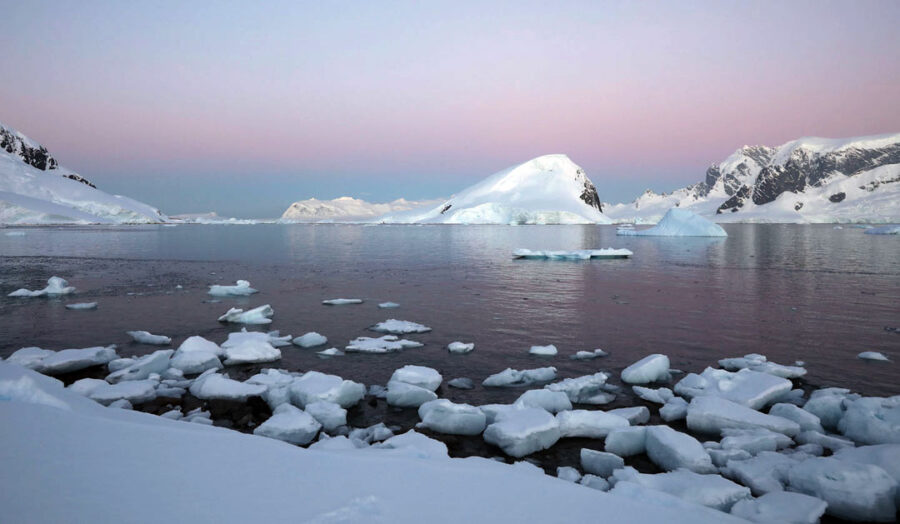
Bob King
Sometimes we overlook common but amazing phenomena that happen right under our noses. Take sunset for example. Most of us look forward to seeing sunsets (and sunrises) and have our cameras at the ready to record the splendid light. But if we turn our backs on the sinking Sun and instead face east, we'll witness the rising of Earth's shadow, cast by the globe on the atmosphere above us. While the science is simple — Sun goes down, shadow rises — the transition from daylight to twilight is a fast-paced, multi-phase event not unlike watching a total solar eclipse, without the anxiety of weather and travel. Any clear evening will do.
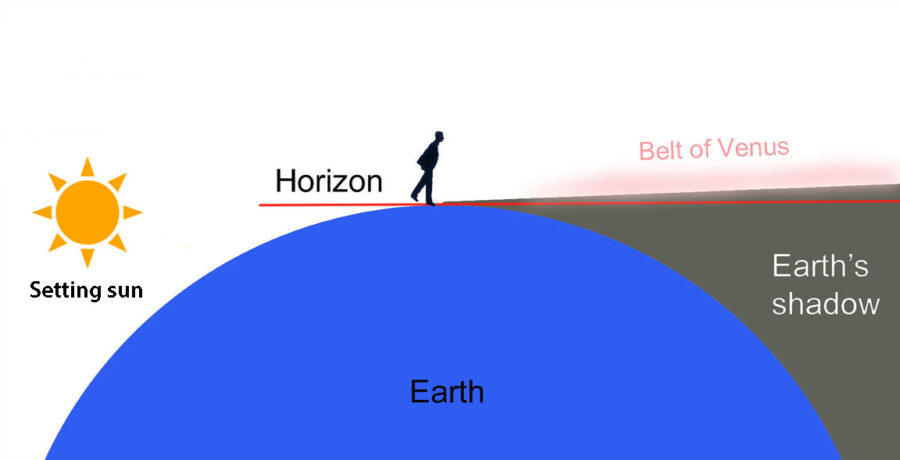
Bob King
You've probably seen the phenomenon before even if you didn't recognize it. At sunset, a low, gray-blue band appears along the rim of the eastern sky and slowly climbs as the Sun sinks deeper beneath the opposite horizon. The colorful anti-twilight arch, better known as the Belt of Venus, fringes the shadow's upper edge of in a rich shade of orange-pink. Reddened light from the Sun, which has set for an observer on the ground but remains "visible" from higher up in the atmosphere, is the source of the arch's light. Air molecules scatter the ruddy rays back to our eyes.
At and shortly after sunset, the solar rays scatter off the thickest, lowest part of the atmosphere, so the the Belt of Venus appears brightest. But the lower the Sun dips below the horizon, the steeper and higher its rays slice across the upper atmosphere. Thinner air at higher altitude scatters less red light, causing the Belt of Venus to fade until it disappears altogether about 15 minutes after sunset.
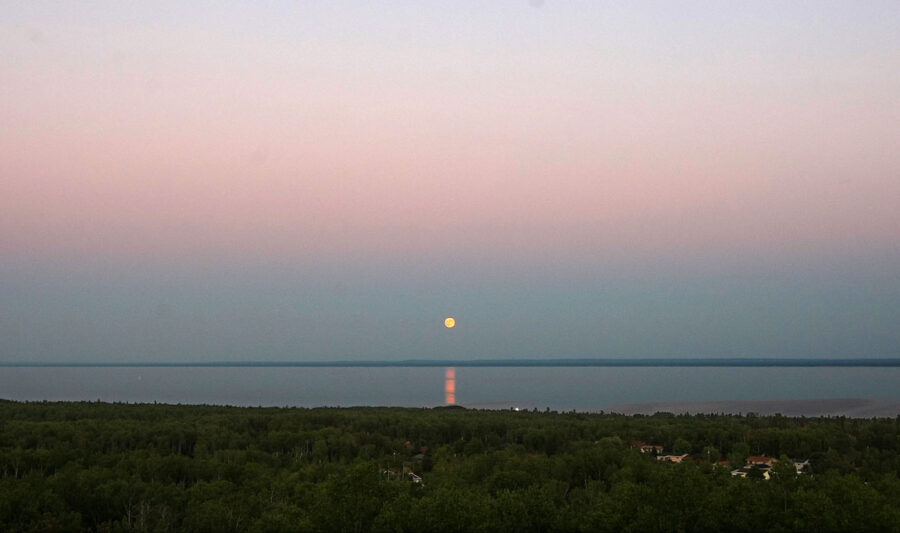
Bob King
Since the Belt is extremely helpful in delineating Earth's blue-gray shadow, its absence — along with the darkening sky — eventually causes the rising gloom to blend into the coming nightfall.
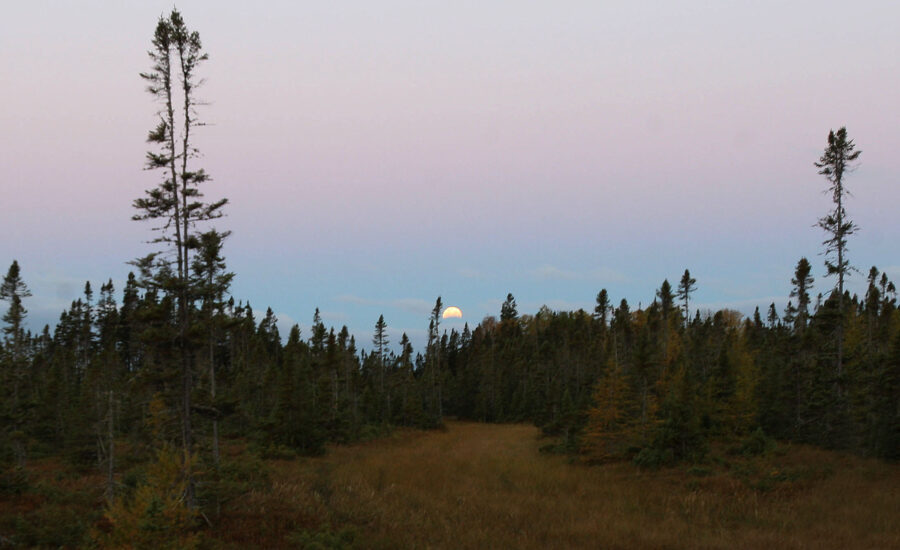
Bob King
I enjoy watching the shadow and Belt of Venus anytime I'm outside around sunset or sunrise, whether that's driving down the freeway or standing at the edge of the forest. Here are a few things to look for whether you plan your session or it happens by chance. For the best views at sunset, find a place with a wide-open view to the east. Face west if you're watching at sunrise. The closer you can see down to the horizon, the more aspects are visible. Not all apparitions are identical. Changes in air transparency as well as clouds near and below the local sunset horizon can alter the color depth, contrast and even the shape of the shadow and Belt of Venus. At times, I've seen stray rays of color appear off to one side or other of the Belt minutes after the central portion has faded away. Expect surprises.
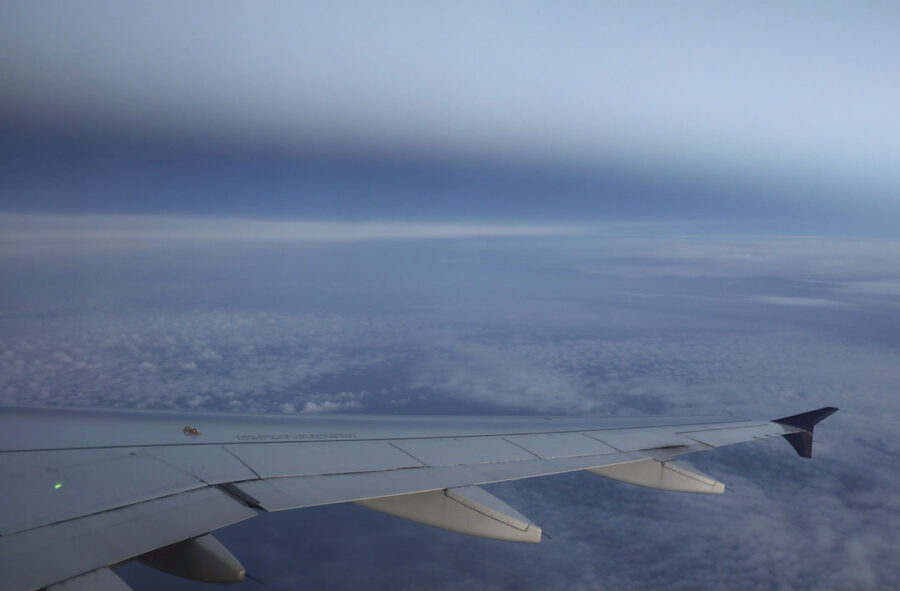
Bob King
Elevation also affects how dark the shadow appears. From an airplane window, it's dramatically sharper and darker (more purplish), presumably due to more transparent air in combination with an exceptionally long line of sight through the atmosphere. One thing that surprised me was seeing what I thought was the shadow before the Sun had actually set. How is that possible?
If you can see nearly to the horizon, the Belt of the Venus becomes visible within about 10 minutes of sundown. Then in the minute or two before sunset, its bottom edge will appear distinctly dusky. Along its bottom you'll see a dusky-gray edge, not the steel-blue of the true shadow but shading nonetheless. This "false shadow" is caused by the atmosphere casting a pall of its own through our line of sight.
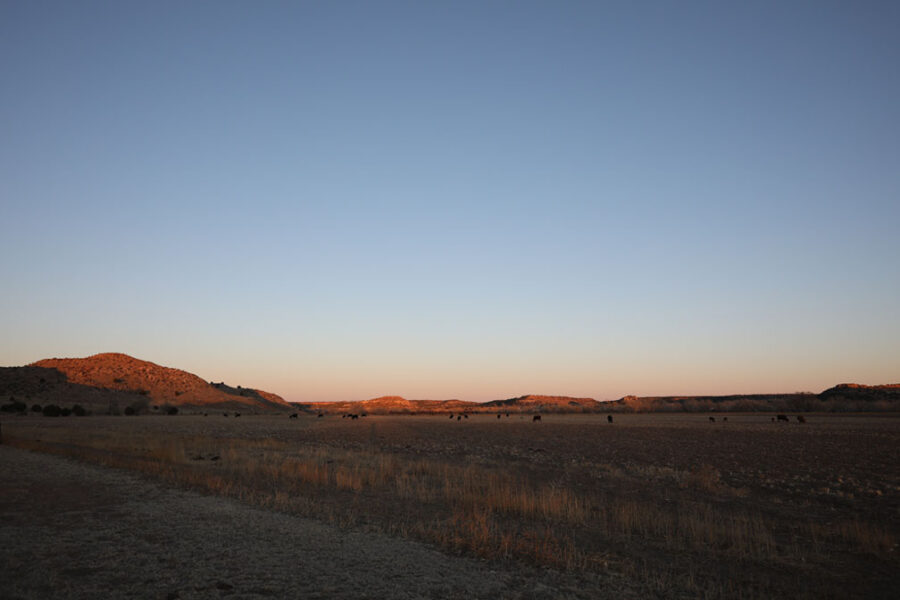
Bob King
Recently, I took a closer look at a shadow-rise from the mesa country of far western Oklahoma during a dark-sky retreat. What I saw convinced me that there was even more to the phenomenon than I'd realized. The following is a photographic timeline of the phenomenon recorded on February 27, 2022. While lacking an ideal horizon, I could see low enough to capture all aspects of the rising. Speaking of which, I've only discussed the shadow's appearance at sunset. You can also view the entire sequence — in reverse — at sunrise by facing the western sky.
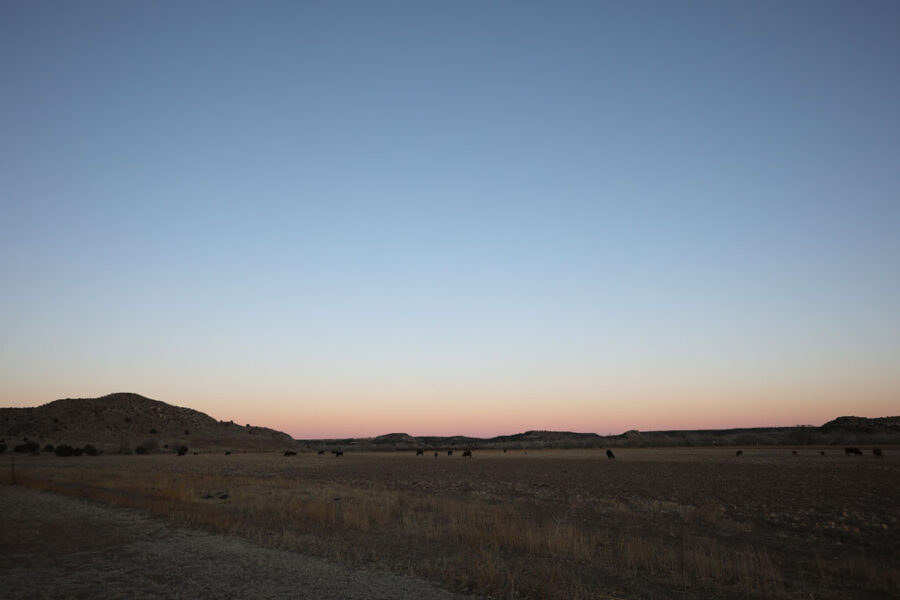
Bob King
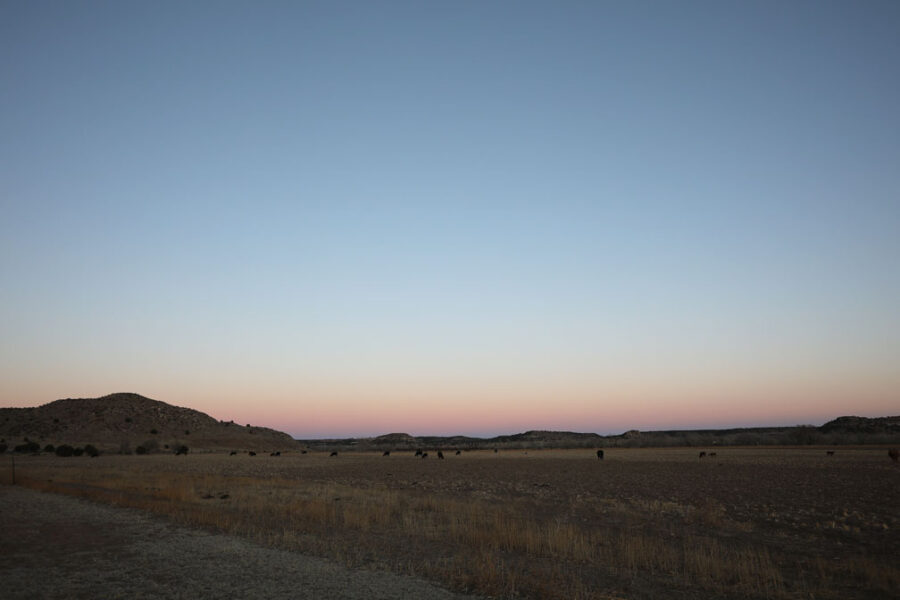
Bob King
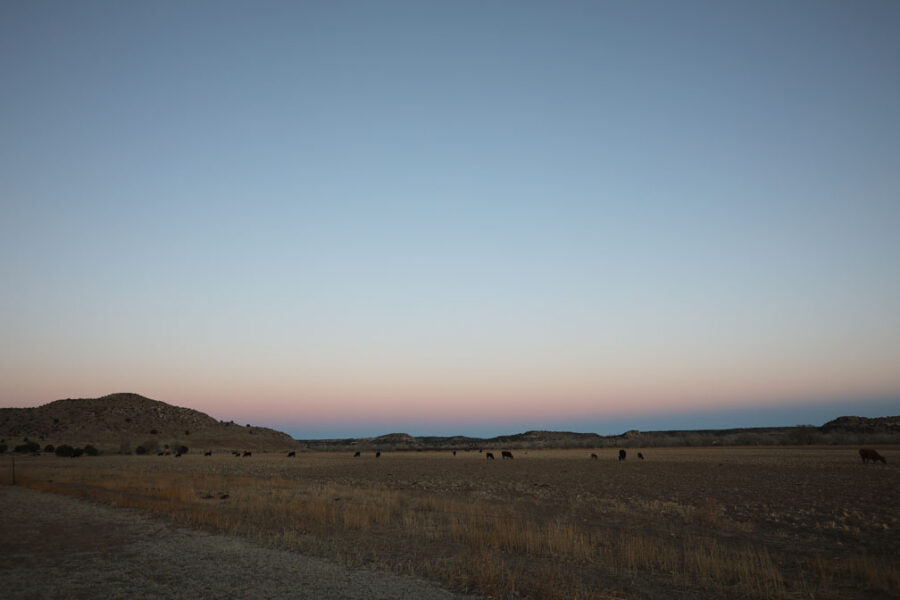
Bob King
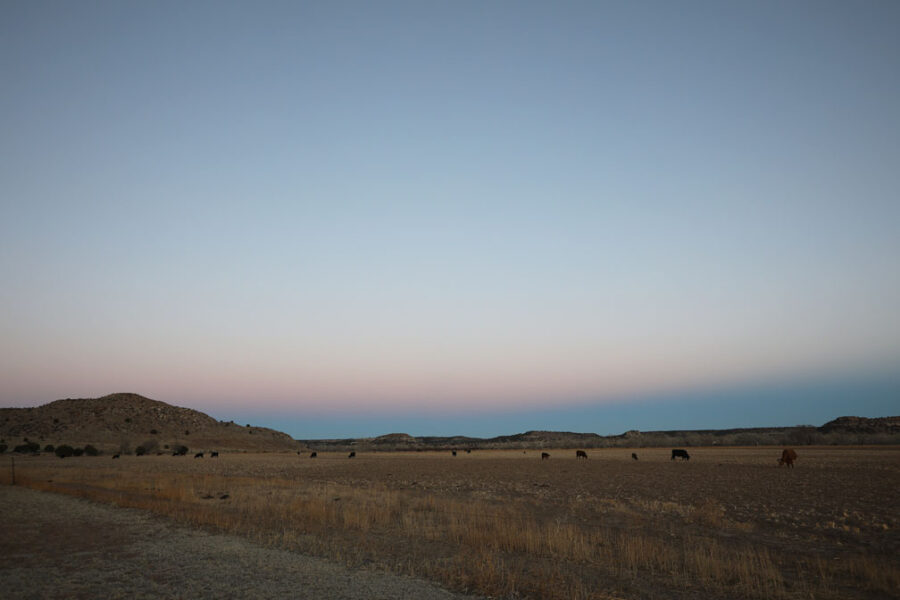
Bob King
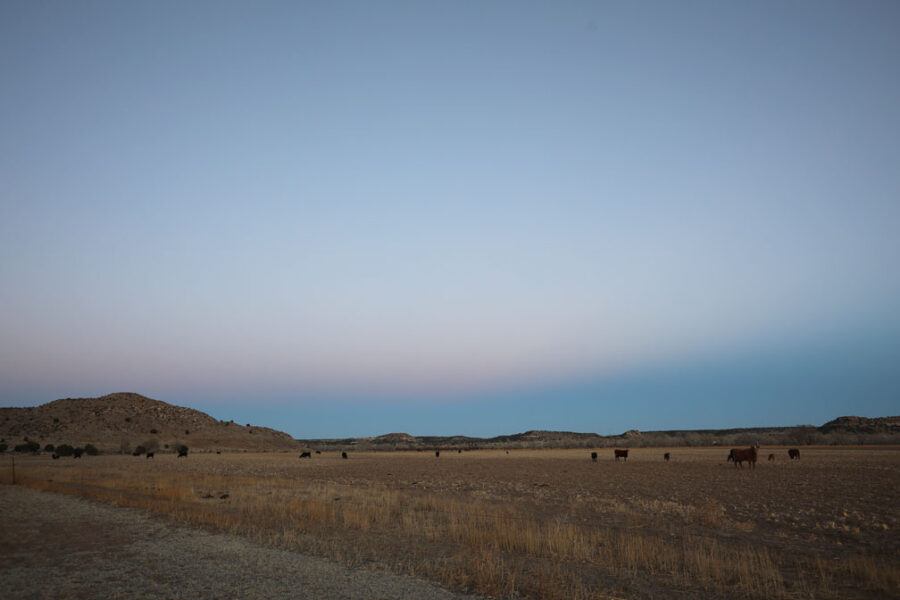
Bob King
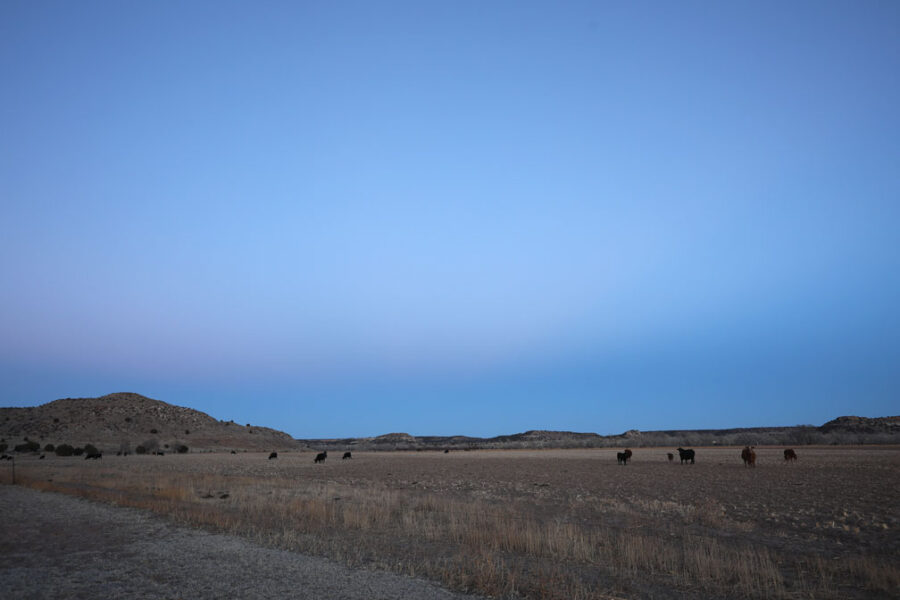
Bob King
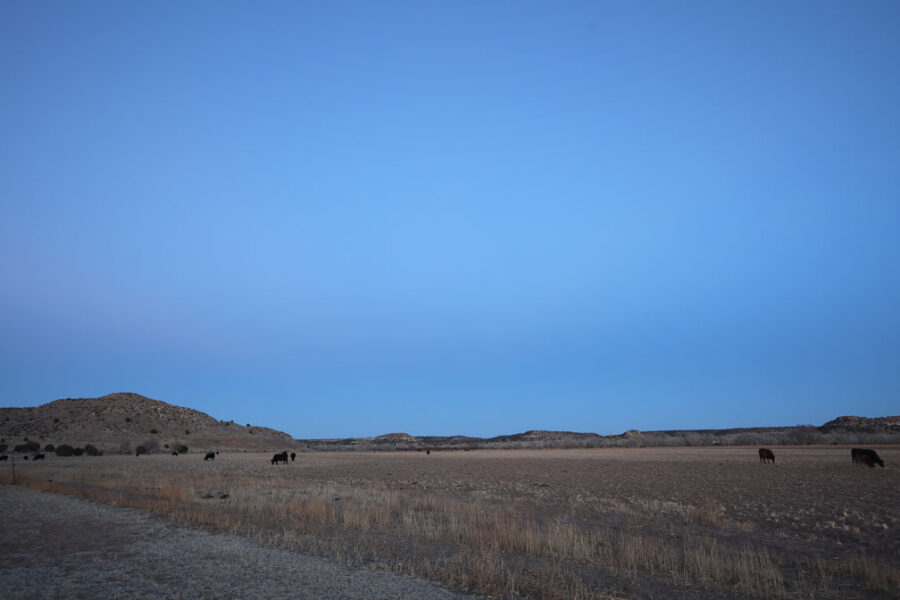
Bob King
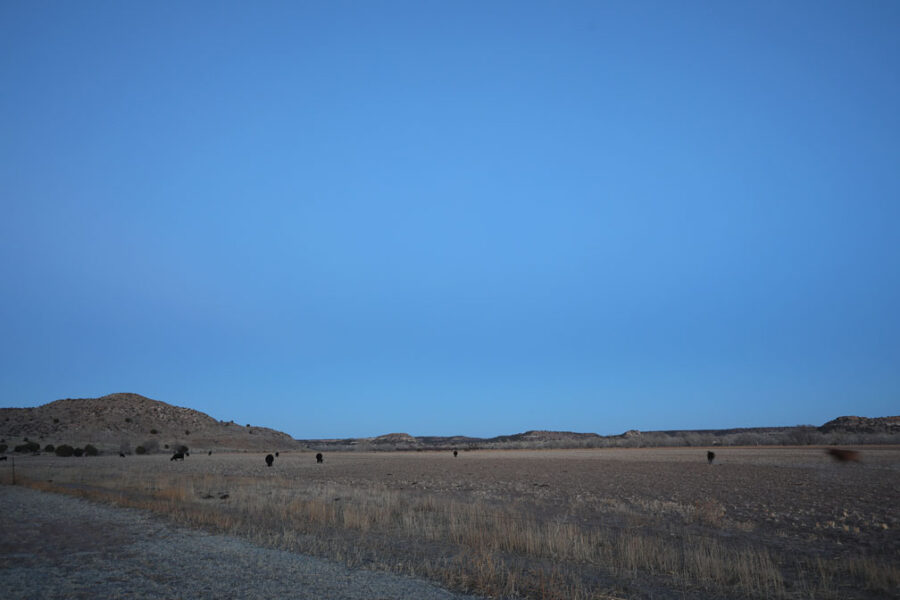
Bob King
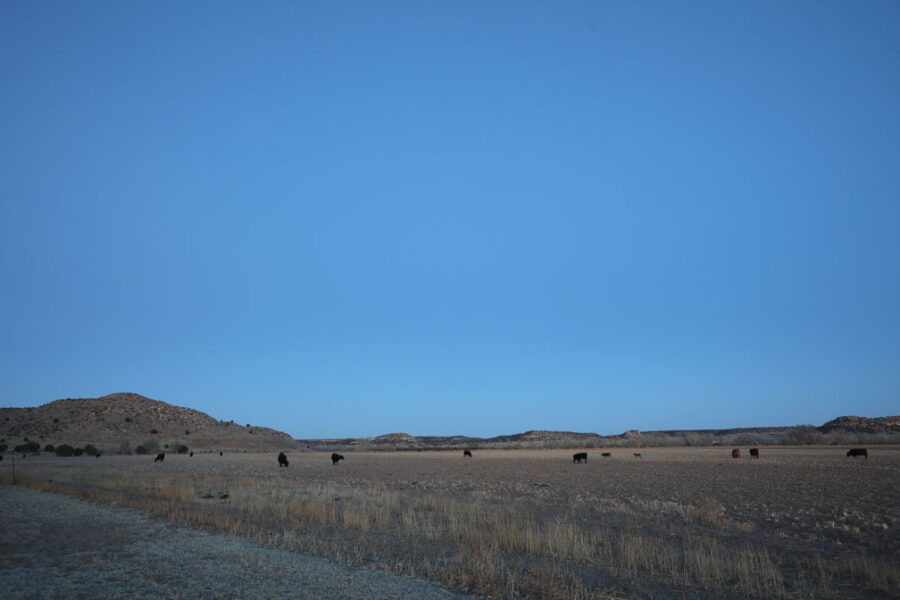
Bob King
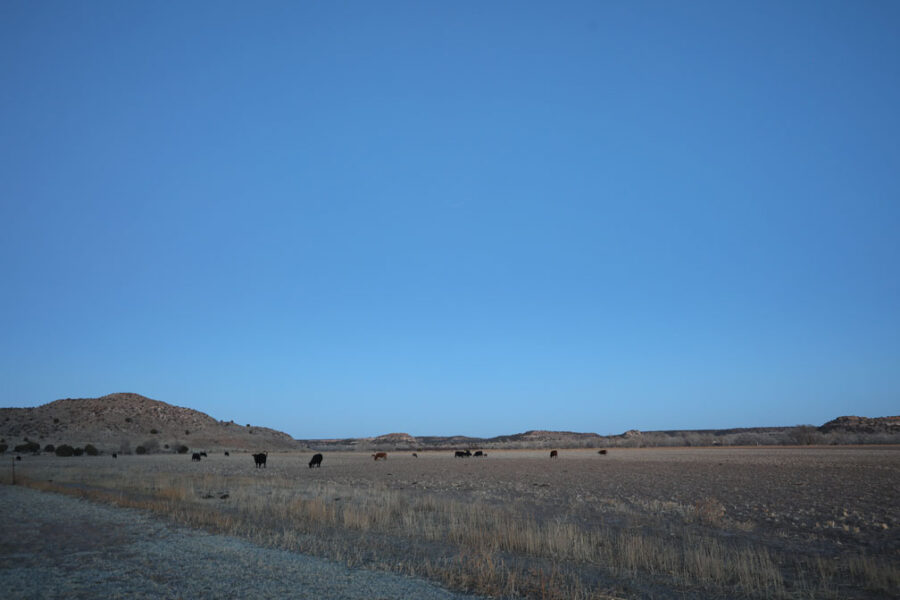
Bob King
The entire sequence lasts about 30 minutes, making watching a shadow-rise something anyone can enjoy. I suspect there's still much to be learned about Earth's atmosphere through extended observation of the phenomenon. By all means, share your observations with us here at Sky & Telescope.
 26
26









Comments
Rod
March 2, 2022 at 3:36 pm
Bob, some excellent images in the report. Belt of Venus, I had to look that up on Wikipedia 🙂
You must be logged in to post a comment.
Bob KingPost Author
March 7, 2022 at 3:30 pm
Thanks, Rod. Much appreciated!
You must be logged in to post a comment.
PGT
March 2, 2022 at 4:21 pm
And here, all these years, I thought that pink glow was from pollution! Glad to know it's natural after all.
You must be logged in to post a comment.
Bob KingPost Author
March 7, 2022 at 3:30 pm
Hi PGT,
And I'm glad you now know it's natural.
You must be logged in to post a comment.
Anthony Barreiro
March 2, 2022 at 7:23 pm
Thank you Bob. The photo of the full Moon rising over Lake Superior is especially beautiful. I love watching the Earth's shadow and the belt of Venus after sunset and before sunrise. They give a vivid sense that we're on a three dimensional planet.
My first guess as to why the Earth's shadow is higher toward the south from your observing site in Oklahoma: there's higher terrain to the south than the north. If so, I think the asymmetry of the shadow would be more pronounced during winter, when the Sun is setting south of due west, than during summer. Just a guess, not sure I'm visualizing the geometry correctly.
You must be logged in to post a comment.
Bob KingPost Author
March 7, 2022 at 3:29 pm
Hi Anthony,
Thank you! I'm mulling over your hunch about shadow height. I'm now back in Duluth from Oklahoma and plan to compare the views. Will let you know if the asymmetry persists or not.
You must be logged in to post a comment.
JimCummings
April 1, 2022 at 10:16 am
Would the tilt of the earth, and/or the position of the observer on the ball of the earth, affect the projection of the shadow? I’ve been pondering (in other contexts) the way that when we view the sun (or in this case, the anti-sun) at sidereal 0hrs and 12hrs, the earth’s tilt is sideways to the sun (equator tilted to ecliptic), while at sidereal 6hrs and 18hrs, the tilt is back or forward (ecliptic parallel to equator)….would the shadow cycle through a pattern of “bulging” to north and south, with times of being symmetrical in between, as we make our way around the yearly orbit?
And what, if any, effect is there in being at a higher or lower latitude?
It’s been fascinating, though also a bit of a mental/perceptual tangle, to try cultivating a physical/bodily sense of our view off the tilted ball as we roll around it each day, and take in the standard diurnal views (sunrise, midday, sunset, starry night) through the year… Not sure if this shadow play is another aspect of that, or not!
In any case, thanks for the wonderful overview you offered here!
You must be logged in to post a comment.
Bob KingPost Author
April 2, 2022 at 12:03 pm
Hi Jim,
Thank you for your kind words AND for your ruminations on the topic. I can speak to the effects at different latitudes because I've seen the shadow and BOV from 62˚ South to 50˚ North and its appearance looks the same. However, at high latitudes around summertime, the shadow lingers all night and rotates around the horizon in opposition to the sun. It's a beautiful effect to see. Otherwise it would seem to me that the simple fact that Earth is a sphere means its shadow would always be circular around the horizon with the center of the shadow exactly opposite the sun . . . unless affected by more local atmospheric effects like haze and shadowing from clouds over the horizon (anti-crepuscular rays). But like you, I'm still pondering this and will share more thoughts after making more observations, particularly at the solstices.
You must be logged in to post a comment.
JimCummings
April 4, 2022 at 9:04 am
I guess I'm wondering now whether the times around the cross-quarter days might show a slightly different pattern. Around equinoxes, the anti-solar point would be near the celestial equator, perhaps making the sideways-tilt of the earth to the sun irrelevant (the equinoxial illusion of being upright beside the sun; this being simply the way things look from on the earth, the sun always rising/setting symmetrically; the tilt being how the earth looks from the larger solar disc perspective). And at solstices, the shadow would be symmetrical, as the equator and ecliptic are parallel, though the anti-solar point is far from the equator. But: would there be a period around each cross-quarter season as the anti-solar point moves away from the celes. equator when the partial sideways-tilt of the earth might make the shadow extend to the south or north a bit?
Your point about the sphere is likely the definitive one; and as I mentioned, it's difficult untangling which of the physical/bodily contexts actually lead to observable variations. I may be a bit fixated on this year's "a-ha" around the equinox, realizing that the earth's axis is indeed still tilted, just sideways to the sun rather than toward or away from it....and still working out whether that can be directly experienced in any way, or is just an interesting overlay/awareness to add to our understanding of the seasons.
You must be logged in to post a comment.
Dave Mitsky
March 2, 2022 at 7:29 pm
Bob,
I've taken hundreds of photographs of the Belt of Venus and the Earth's shadow over the years so I read your article on the anti-twilight arch with interest.
My wife likes to use the other term attributed to this phenomenon, the Girdle of Venus.
You must be logged in to post a comment.
Bob KingPost Author
March 7, 2022 at 3:27 pm
Hi Dave,
Each to her own. That works, too! Thanks for your comment.
You must be logged in to post a comment.
Jeff
March 4, 2022 at 5:37 pm
Lovely to see an article discussing the Belt of Venus. I never tire of seeing this effect, and I always like to take the time to watch the transition unfold when I see it occurring. Great to see an annotated diagram too - it makes it much easier for people to understand. Well done.
You must be logged in to post a comment.
Bob KingPost Author
March 7, 2022 at 3:26 pm
Really appreciate your kind words, Jeff. You and I share the same feeling about the Belt and shadow. I'll never tire of watching it. The other day I got to see it twice — at dusk and then at dawn. What a hoot to see everything in reverse. It bends the mind!
You must be logged in to post a comment.
Greg Furtman
March 4, 2022 at 6:51 pm
Hi Bob,
I'm lucky that I live in an area that is still fairly dark. And because I get up early I get to see the AM belt of Venus when it is clear. Always wonderful to see. 🙂
You must be logged in to post a comment.
Bob KingPost Author
March 7, 2022 at 3:25 pm
Hi Greg,
Great to hear from you. I'm jealous of all your a.m. sightings of the BOV, but there is a solution. I should get up earlier!
You must be logged in to post a comment.
Chris-Schur
March 5, 2022 at 4:18 pm
Bob, I really like that sequence you show with the belt of venus rising. When I tell average people about what this is, they cant believe you can actually see the shadow of the Earth for real! At high altitudes such as where we live, we typically use the visibility of the belt after sunset to gauge how dark the night sky will be and the transparency. The more clearly we cab see the blue shadow, the darker the night will be!
You must be logged in to post a comment.
Bob KingPost Author
March 7, 2022 at 3:24 pm
Hey Chris,
Thanks, man. Glad you enjoyed the sequence. I just got back from mesa country in Oklahoma, and I thought the shadow look a little richer than from home. I love the color. Like staring into the deep ocean.
You must be logged in to post a comment.
New Jersey Eclipse Fan
March 6, 2022 at 11:29 am
Thanks, Bob, and for all the posts; you learn something new every day! My "thing" is to observe the International Space Station's entering Earth's shadow during those flyovers when its appearance terminates before reaching the horizon. It reminds me of the original Star Trek series--still my favorite--and the cloaking device. The ISS just fades out and then disappears from view like magic!
You must be logged in to post a comment.
Bob KingPost Author
March 7, 2022 at 3:22 pm
Hi New Jersey eclipse fan,
Thank you for your kind words! I also love watching the ISS fade as it enters Earth's shadow. Cloaking device, indeed! Have you ever tracked it into the shadow with binoculars? Try it sometime. You might be surprised at what you see.
You must be logged in to post a comment.
New Jersey Eclipse Fan
March 8, 2022 at 1:57 pm
[I thought I had submitted the following post last night, but it must've disappeared into cyberspace when I clicked on the "SUBMIT" button. In any case, this is kind of what I said:]
Wow--a reply from Bob King! Now I know what Rod, PGT, Anthony, Dave, Jeff, Greg, Chris and Frank feel like! Thanks for the advice about the binoculars; since I don't get up before 6:00am, I'll have to wait until Tuesday and Wednesday, March 15-16 for a (visible) ISS flyover to try it.
You must be logged in to post a comment.
Bob KingPost Author
March 8, 2022 at 8:30 pm
New Jersey Eclipse Fan,
Wishing you clear skies for the next flyover!
You must be logged in to post a comment.
New Jersey Eclipse Fan
March 8, 2022 at 10:48 pm
Thanks again! I'll try to remember to provide a report on my binocular-based observation.
You must be logged in to post a comment.
Frank-ReedNavigation.com
March 7, 2022 at 1:06 pm
So WHY is this twilight effect called the "belt of Venus"? And why do people like that term? Is it just more jargon to throw around at the star party?? This name is not particularly old in English-language sources, and in fact the earliest cases of this expression (for this phenomenon, and not other un-related uses of the phrase) that I can find appear in translations or possibly mis-translations of Russian sources from about 50 years ago. When Tony Flanders wrote about the "belt of Venus" for S&T over a decade ago, the expression was still relatively rare (https://skyandtelescope.org/astronomy-blogs/the-belt-of-venus/) and commenters noted that they had never heard of the expression. The older name for this is the "anti-twilight arch" or sometimes the "twilight arch" or, if you prefer classical word roots, sometimes the "anti-crepuscular arch" (my own preference is "anti-twilight arch"). I can't think of any sensible scientific or cultural reason to call it the "belt of Venus", and the name does little to illuminate this luminous effect...
You must be logged in to post a comment.
Bob KingPost Author
March 7, 2022 at 3:20 pm
Hi Frank,
I've always heard of it called the Belt of Venus, but the more scientific name is the anti-twilight arch (also mentioned in the in the article). It's a colorful name for a colorful phenomenon even it has no direct connection to Venus. After cursory digging, a Wiki reference says: "alludes to the cestus, a girdle or breast-band, of the Ancient Greek goddess Aphrodite, customarily equated with the Roman goddess Venus." And true to appearance, it does resemble a colorful belt of girdle. I have no problem using the term because I find the phenomenon captivating. I'd also argue it's easier for the public to remember the term versus anti-twilight arch. Both are acceptable.
You must be logged in to post a comment.
AB
March 9, 2022 at 12:37 am
A cool and interesting article, especially the photo series. I know I've seen this many times as I am not far from a clear eastern horizon, but, I've never really known what it was nor understood the details. Now I'm going to wait for a clear night to go and really LOOK. Thanks 🙂
You must be logged in to post a comment.
Bob KingPost Author
March 9, 2022 at 12:51 am
Thanks, AB! Good luck in your quest! And remember you can also go out at dawn and face west in case you can't find a good eastern horizon.
You must be logged in to post a comment.
You must be logged in to post a comment.